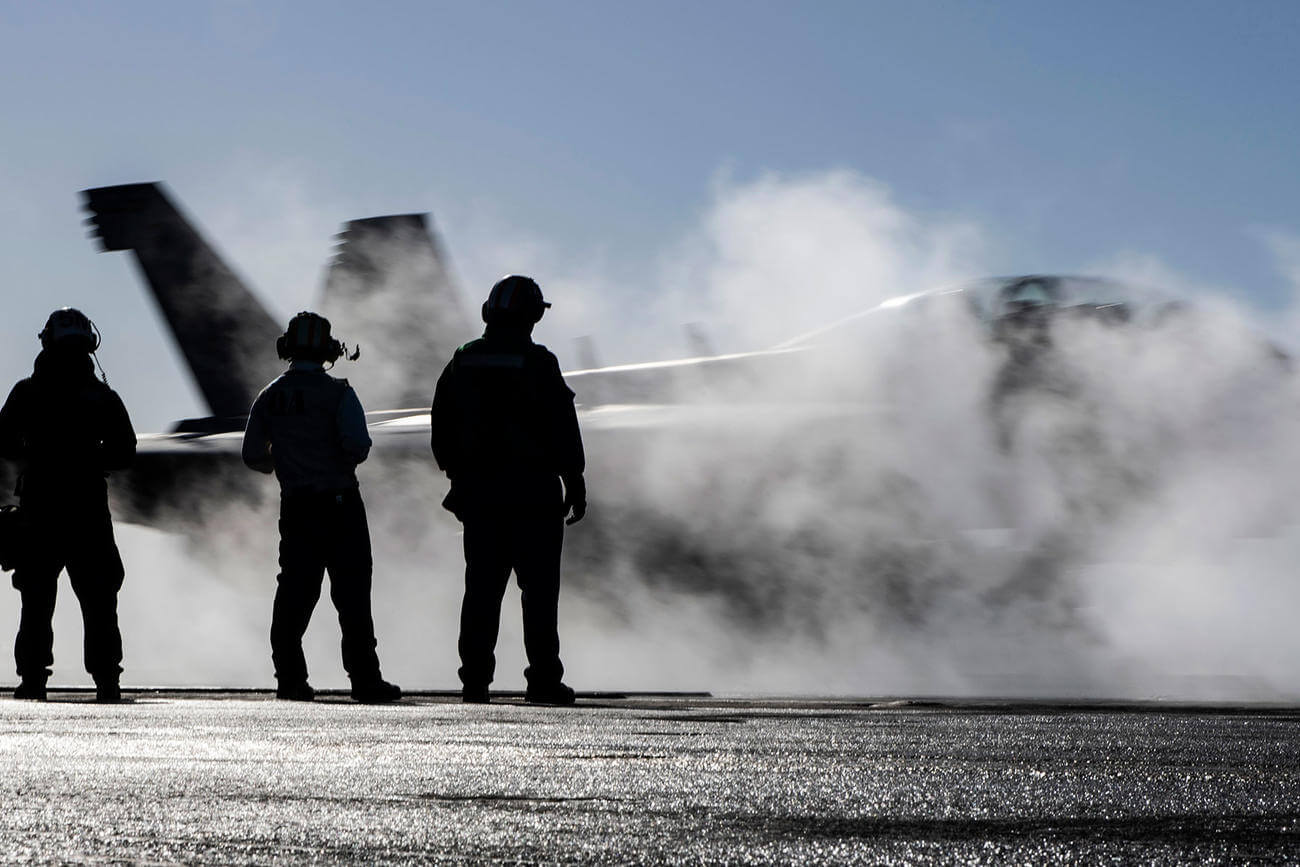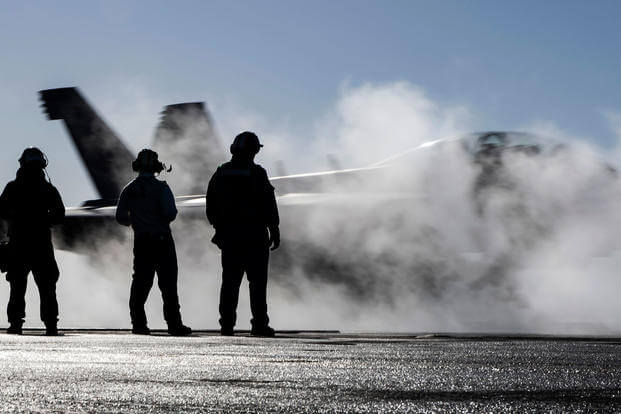

The aircraft carrier USS Nimitz is back to sea after being sidelined for two weeks following the discovery of jet fuel in its drinking water system.
U.S. Third Fleet spokesman Cmdr. Sean Robertson said Monday the Nimitz left Naval Air Station North Island, California, on Sunday to rejoin its carrier strike group for pre-deployment training. According to Robertson, the ship’s water system has been flushed, cleaned and tested, and the “potable water was determined to be safe for the crew.”
Personnel reported contamination the evening of Sept. 16 while the ship was at sea for its Composite Training Unit Exercise (COMPTUEX), workup training to ensure that the vessel and its group are combat-ready.
Read Next: Legionella Found in Pipes at Medical Barracks at Joint Base San Antonio, Forcing Relocations
The Nimitz returned to NAS North Island to solve the problem, but not before 11 sailors reported symptoms associated with exposure to JP-5 jet fuel, including headache, rashes and diarrhea.
Robertson said they all received medical treatment and have since been cleared for duty.
“The health, safety, and wellbeing of Nimitz Sailors remains our top priority,” Rear Adm. Christopher Sweeney, commander of Carrier Strike Group 11, said in a statement provided to Military.com.
“I want to thank all base, local, and federal health and environmental agencies who have worked to ensure we met and exceeded all testing, regulations, and purity standards in order to safely return this warship to sea. I also want to acknowledge the Sailors and leaders on board Nimitz who worked tirelessly and took the necessary action to keep the crew safe,” Sweeney added.
The Navy confirmed Sept. 20 that there were “trace amounts” of JP-5 in the carrier’s potable water system after reports of the contamination began popping up on social media. Navy officials said the crew “immediately took action to secure access to the ship’s potable water and provide bottled water” to all aboard.
Once in port, the carrier was connected to the city of San Diego’s water system and flushed with one million gallons of fresh water. Robertson added that, since Sept. 21, an independent California-based lab — Orange Coast Analytical — has tested the system 70 times.
In late September, Robertson said one of the ship’s 26 potable water tanks had become contaminated with fuel and was taken offline, as were three adjacent tanks. He did not answer questions as to how the tank was tainted, but Bradley Martin, a researcher with Rand Corp. and retired Navy surface warfare officer, told Military.com last month that contamination can and does occur periodically with complicated systems, especially on large vessels and older ships.
The Nimitz is the Navy’s oldest carrier, commissioned in 1975.
“It would not be surprising that there will be some deterioration, which could possibly lead to this type of thing,” Martin said.
The Nimitz incident happened just days before the aircraft carrier USS Abraham Lincoln found trace amounts of bacteria in its potable water supply, also while operating off the coast of southern California.
No one was reportedly sickened by that contamination, first reported by the San Diego Union-Tribune.
The mishap aboard the Nimitz follows a massive spill of JP-5 and other fuel into the Navy’s drinking water system at Joint Base Pearl Harbor-Hickam, Hawaii, last November. The spill — caused by an earlier accident involving the loss of nearly 20,000 gallons of fuel from the service’s Red Hill Bulk Fuel Storage Facility — contaminated the drinking water to thousands of homes in and around the installation, driving military families from their houses or forcing them to use supplied water for months.
Four months after the accident, Defense Secretary Lloyd Austin decided to close the fuel depot, which sits atop the main aquifer that provides fresh water to the city of Honolulu.
Austin traveled to Hawaii on Friday to meet with the leaders responsible for removing the fuel from the facility. He also met with state officials and affected families.
“Defueling and closing Red Hill is the right thing to do — for our service members, our families, the people of Hawaii, the environment, and our national security,” Austin said in a statement released Friday.
More than 700 families, many of whom say they were sickened or continue to have health issues related to consuming the tainted water, have filed a lawsuit against the Navy over the incident.
Last Wednesday, attorneys for the families wrote Austin, urging him and the admiral in charge of defueling the depot, Rear Adm. John Wade, to remember the families as they move ahead with the operation.
“Truth. Recognize that people are sick. Please instruct Navy personnel to stop claiming there are no long-term health effects of the families’ ingestion of and immersion into the contaminated water,” wrote attorneys with Just Well Law in Austin, Texas.
– Patricia Kime can be reached at [email protected]. Follow her on Twitter @patriciakime.
Related: Navy: No PFAS ‘Forever Chemicals’ Detected in Red Hill Water
© Copyright 2022 Military.com. All rights reserved. This material may not be published, broadcast, rewritten or redistributed.
